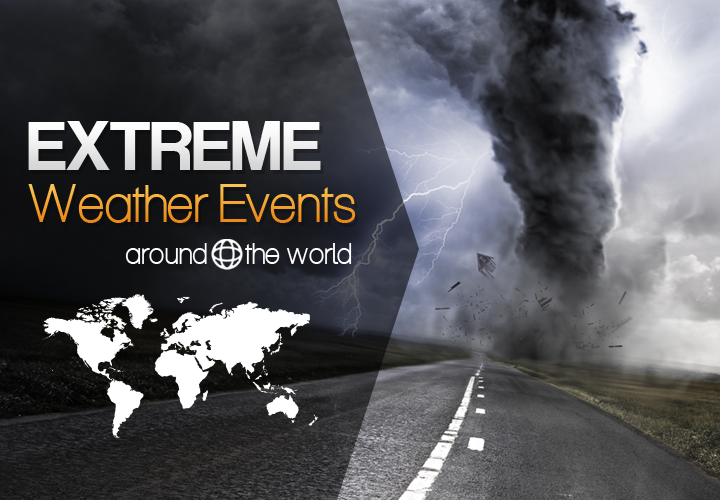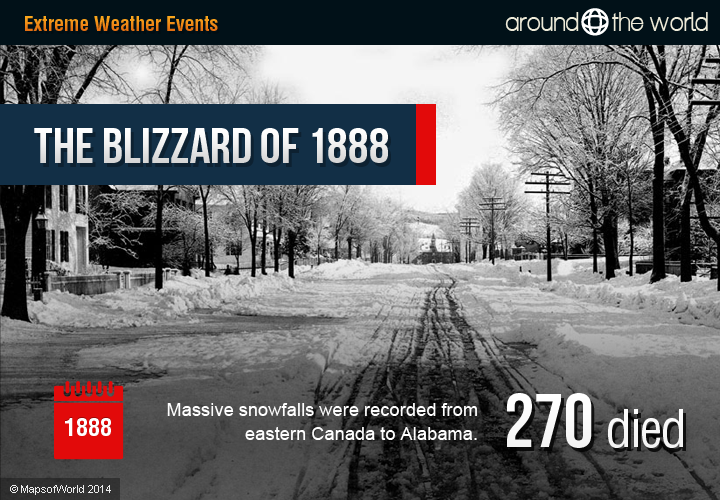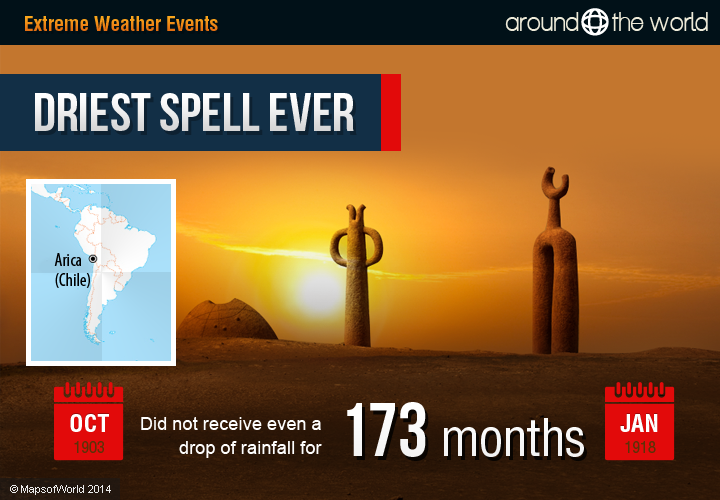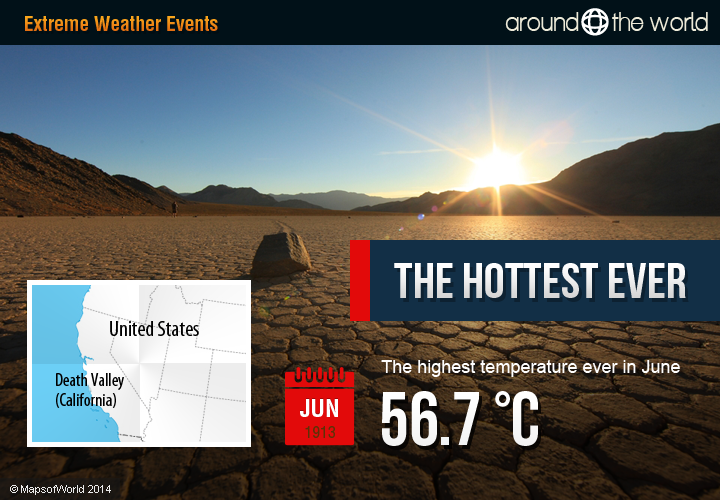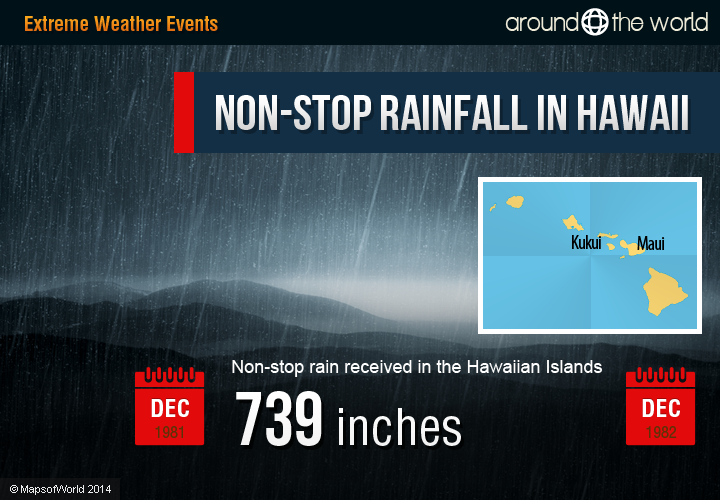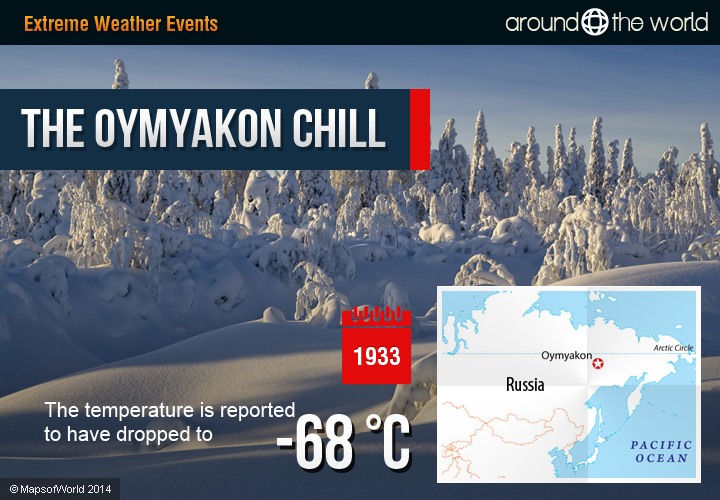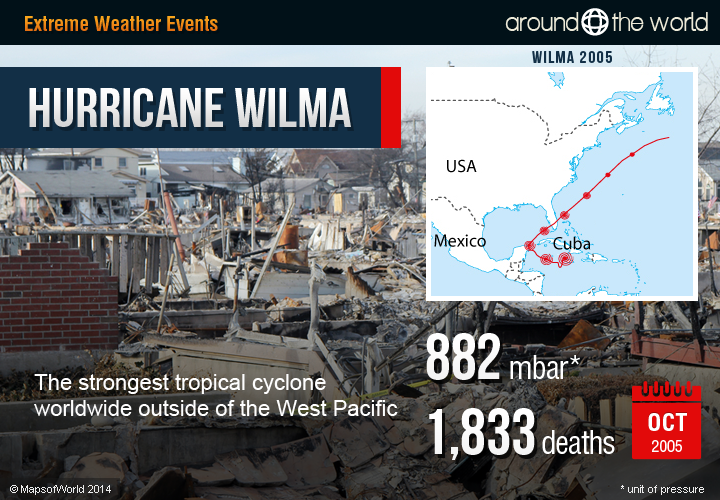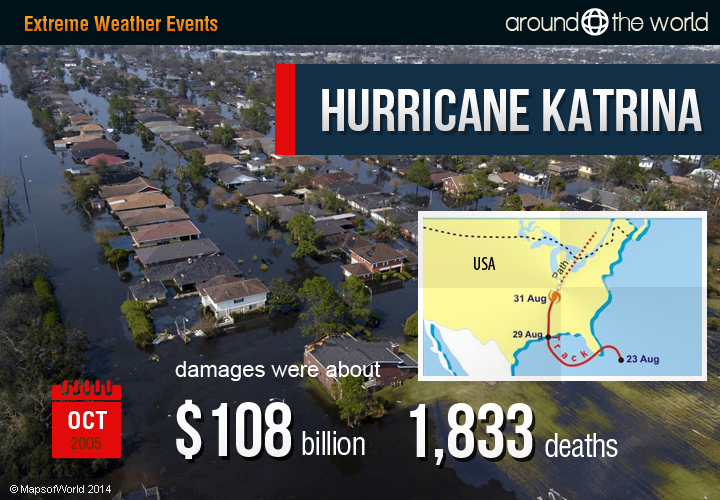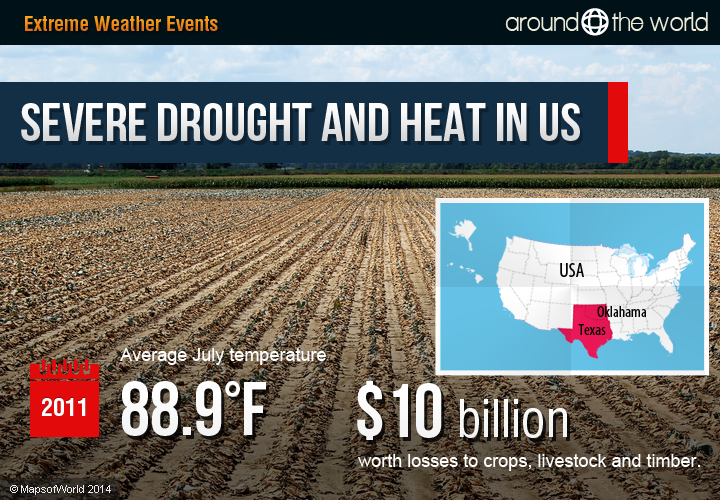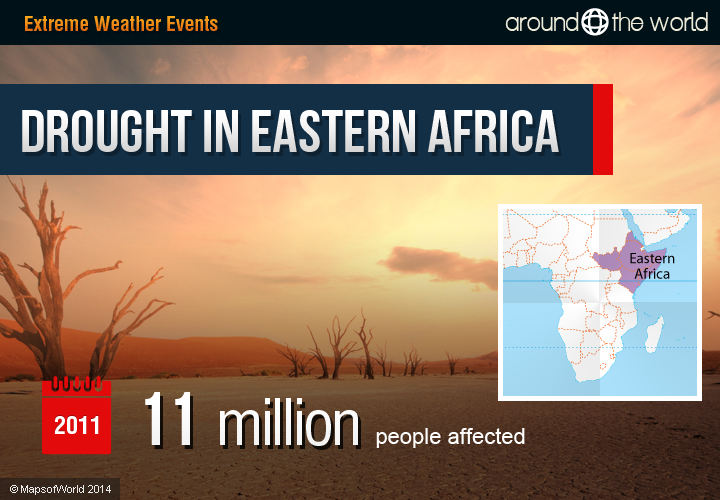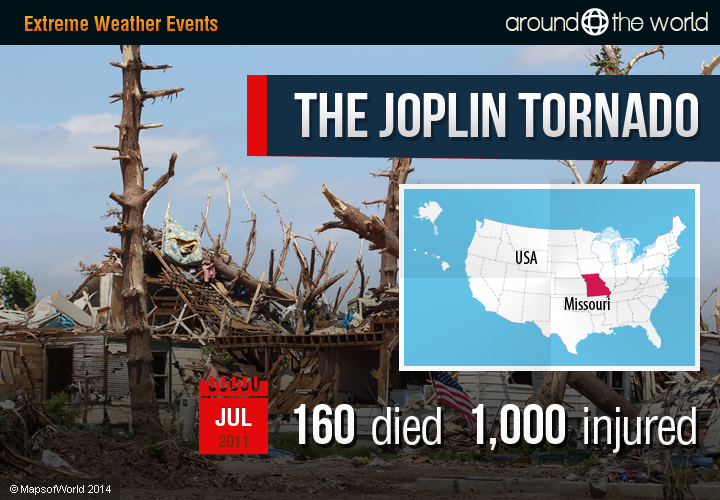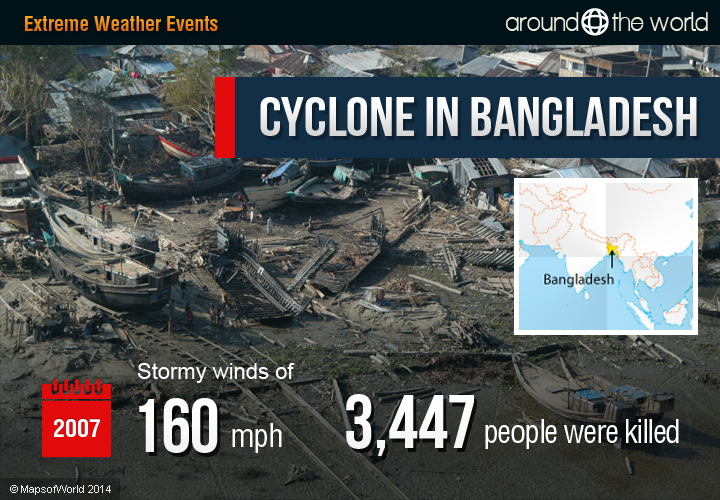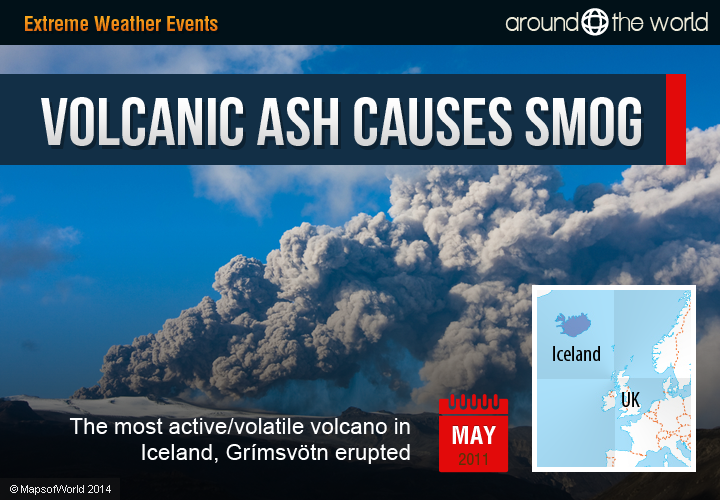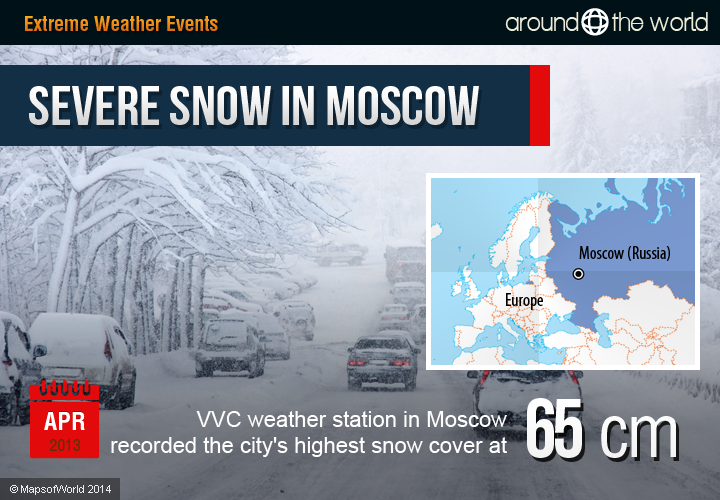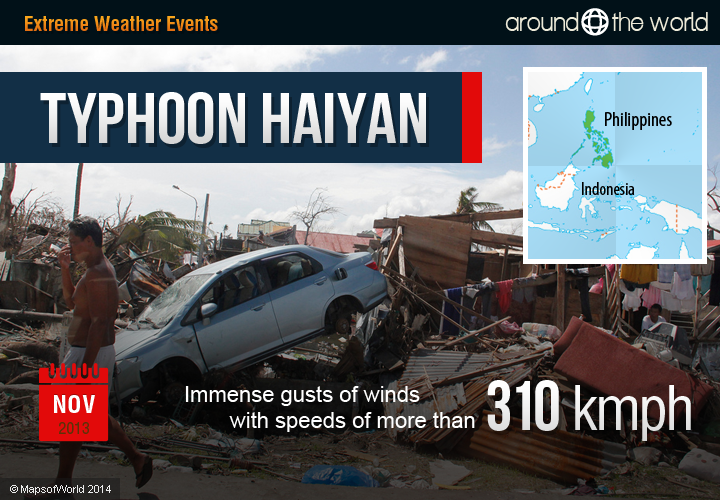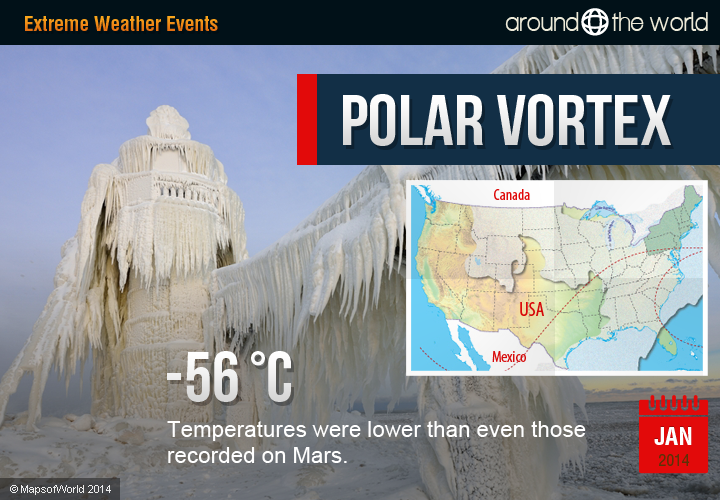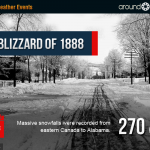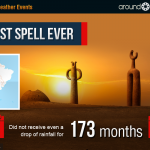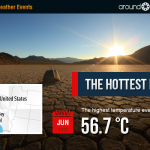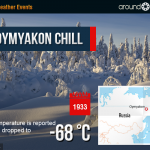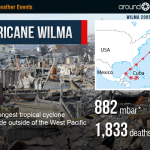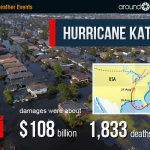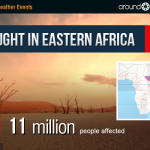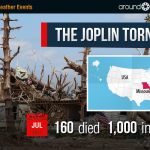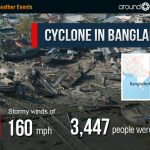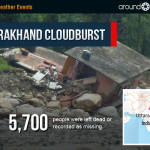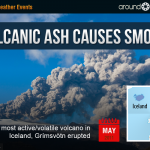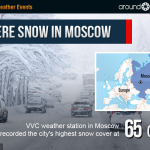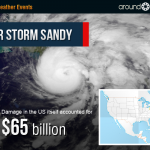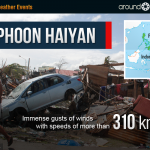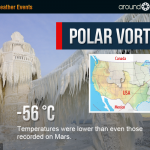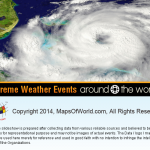Several winds have blown over the earth ? both hot and cold ? since times immemorial. These events tested mankind’s resilience in form of hurricanes, cyclones and floods, blazing heat waves leading to wildfires and droughts, freezing temperatures, and so forth. Analysts say that the past decade has witnessed exceptionally high number of ?unprecedented extreme weather events? across latitudes ? some predictable, some unpredictable, and even somewhat bizarre.
We list a few:
Polar Vortex ? in January, 2014 (Mid West US and Canada)
Areas such as Maine, Boston, Chicago and Mid West to North Eastern US and regions of Canada froze from its impact, when an Arctic blast spilled over ? temperatures fell to -56 degrees C. Temperatures were lower than even those recorded on Mars.
Snowing in Cairo ? December 2013
In December 2013, the Egyptian capital witnessed snowfall for the first time in 112 years. One of the stranger scenes was of camels sitting on snow.
Typhoon Haiyan in November 2013 (Philippines)
Winds with immense gusto and speeds of more than 310 kmph made Haiyan the most powerful tropical cyclone ever to make landfall. “Unusually warm subsurface Pacific waters? added to its strength and caused at least 10,000 deaths in Philippines.
Super Storm Sandy (October, 2012) (Cuba, Jamaica, Bahamas, New York, New Jersey, Florida and Maine in US)
Highly destructive and intense, Super Storm Sandy ripped through Cuba, Jamaica, Florida to Maine and thereon to New Jersey and New York. Damage in the US itself accounted for USD 65 billion. The total damage was far beyond this. 24 States across the US suffered severe floods and power outages. The hurricane began as a Category 2 storm and thereafter intensified to be a Category-3 one. There were several casualties too.
Severe snow cover ever in Russia (April, 2013)
On April 1, 2013 the VVC weather station in Moscow recorded the city’s highest snow cover since 1895, at 65 cm, which surpassed the previous record by 9 cm.
Uttarakhand, India Cloudburst (June, 2013) Uttarakhand, a state in North India, faced a severe cloudburst on 3-4 days consecutively in June, 2013 and was left utterly devastated by the floods and landslides that followed. More than 5,700 people were left dead or recorded as missing. The locals were the worst hit and roads and bridges collapsed leading to critical damages to infrastructure. The rainfall and floods left pilgrims and tourists stranded through the state.
Volcanic ash causes smog-like weather ? May 2011 (Iceland)
The most active/volatile volcano in Iceland, Gr?msv?tn erupted in May 2011. Air travel across Northern Europe was totally disrupted by the volcanic ash plume that lasted for several weeks.
The island nation of Iceland has 30 active volcanoes. Of these, 13 have erupted since the settlement of Iceland began in AD 874.
The Joplin Tornado ? July 2011 (US)
This vicious tornado took the lives of 160 people and injured about 1,000 more, becoming the seventh-deadliest tornado in US history, and the deadliest post 1950. The Joplin tornado had maximum winds estimated at 210 mph.
Drought in Eastern Africa, 2011 (Kenya, Somalia, Eritrea, Ethiopia, and South Sudan)
About 11 million people were affected. This was the worst drought ever in East Africa in 60 years and countries such as in Kenya, Somalia, Eritrea, Ethiopia, and South Sudan faced the blistering conditions.
Severe Drought and Heat in US ? 2011 (Oklahama and Texas, US)
Oklahoma shriveled under the hottest summer of any state in American history – ahead of Texas. Oklahoma?s average July temperature was 88.9 degrees F. Texas, Oklahoma, New Mexico, Arizona, Kansas, and Louisiana reeled under drought conditions. The drought brought on severe heat with the most number of 100-degree F days. Texas faced one of the most intense droughts ever with about $10 billion worth losses to crops, livestock and timber.
Most Active Tornado Month ? April, 2011 (Southeast US)
In April, 2011, for four consecutive days, more than 200 tornadoes ripped through five of the southeastern states of US. April 2011 was the hardest hit tornado month with 753 tornadoes. April 27th reeled under the deadliest tornado – 316 people died mainly in Alabama and Mississippi from 122 tornadoes.
Cyclone in Bangladesh in 2007
Cyclone Sidr came down on parts of Bangladesh with stormy winds of 160 m p/h. The storm caused 3,447 deaths.
Hurricane Katrina in 2005 (US)
The most talked about and most expensive till date as damages were about $108 billion. This Category-5 hurricane occured in the US. The hurricane drew heavy rains and flooded the levee system that failed thoroughly. There were almost 1,833 deaths.
Hurricane Wilma, 2005
This is the strongest Atlantic hurricane ever recorded, after reaching an intensity of 882 mbar in October 2005; this was also the strongest tropical cyclone worldwide outside of the West Pacific.
Non-stop Period of Rainfall (December, 1981-82)
Non-stop rain was received for a year in the Hawaiian Islands in the US at Kukui, Maui, Hawaii from Dec. 1981?Dec. 1982 with about 739 inches.
The Oymyakon Chill in 1933 (Siberia, Russia)
In 1933, the temperature is reported to have dropped to -68 degrees C in the Siberian Village of Oymyakon in Russia. Outside of Antarctica, it is the place that has witnessed the coldest climes. Oymyakon is the coldest permanently inhabited place on the earth.
The Hottest Ever ? in 1913 (Death Valley, US)
The highest temperature ever in recent years was the summer of 1913 in the US (Death Valley) when the temperature was at 56.7 degrees C. The highest temperature ever in June was in the month of June in 2013 with 54 degrees C, again at Death Valley.
Driest Spell Ever ? 1903-1918 (Arica, Chile)
The longest dry spell ever that was measured in years hit Chile. Arica, Chile did not receive even a drop of rainfall from October, 1903 to January 1918 ? all of 14 years, that is, a total of 173 months.
The Blizzard of 1888 (Northeast US)
Northeastern US shivered under its impact. Massive snowfalls were recorded from eastern Canada to Alabama. Parts of 26 states were hit with nearly half of the entire US population getting affected. 270 Americans lost their lives.


